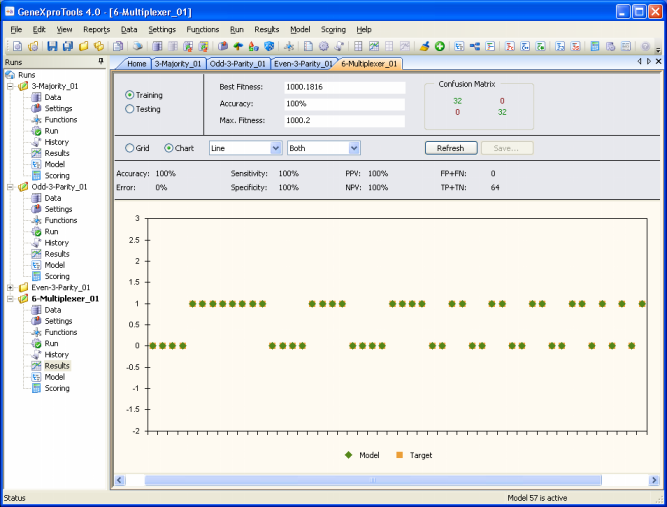This indicator comes from the medical domain and consists of the percentage of people with a negative diagnostic test who do not have the disease.
More formally, the negative predictive value NPVi of an individual program
i is evaluated by the equation:

where TPi, TNi, FPi, and
FNi represent, respectively, the number of true
positives, true negatives, false positives, and false
negatives.
TPi, TNi, FPi, and
FNi are the four different possible outcomes of a single prediction for a two-class case with classes “1” (“true”) and “0” (“false”). A
false positive is when the outcome is incorrectly classified as “true” (or “positive”), when it is in fact “false” (or “negative”). A
false negative is when the outcome is incorrectly classified as negative when it is in fact positive.
True positives and true negatives are obviously correct classifications.
Keeping track of all these possible outcomes is such an error-prone activity, that they are usually shown in what is called a
confusion matrix. And for all Logic Synthesis problems,
GeneXproTools 4.0 shows the confusion matrix for all the evolved
models and updates it continuously during the run.


And to evaluate the NPV of your model both on the
training and testing data, you just have to go to the Results
Panel after a run.

|


